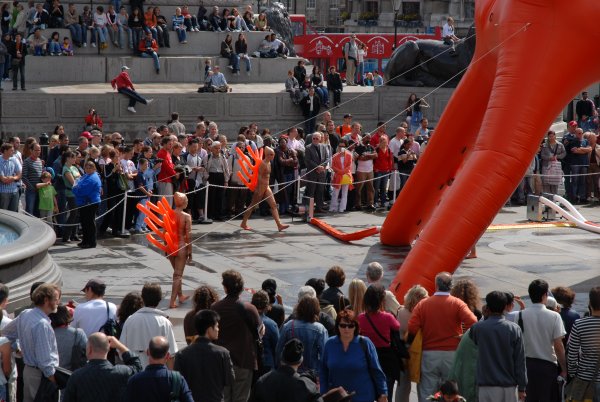I haven’t read Ian McEwan‘s novel Atonement. It is fetching a lot of publicity at the moment, because McEwan has been accused of copying phrases from the biography of wartime nurse and romantic novelist Lucilla Andrews. He, of course, says the claims are ridiculous, and that all he did was normal research. Other people have said the same thing, noting that he has acknowledged his large debt to Andrews.
I haven’t read Atonement; nor have I read No Time For Romance, the book he is accused of cribbing from. This post, though, is about neither of them. It’s about another book they reminded me of, a book that I read some time ago, but was unable to finish, because I felt the author had gone rather closer to his source material than he should have. It’s not a book you’re likely to have heard of, either. It’s by a top lawyer and Oxford don* called Francis Bennion, and it’s called Victorian Railway Days.
It’s an episodic novel about the social changes wrought by the arrival of the railways in the 19th century, owing quite a bit in its style to Charles Dickens’ Mugby Junction stories. I found it in my local public library when I was a teenager, and took it out. I didn’t get very far into it, though, before I found a passage that I recognised, about the importance of the railway station to rural village life. It’s quite long, and I’m not going to quote it. But I am going to quote something very very similar.
The Jones’s who don’t associate with the Robinsons, meet there. Mr Jones would not like the
stationmaster to touch his cap to the Robinsons, and pass him without notice, so he sends the
stationmaster a hare. The Rev Mr Silvertongue is always wanting to take a party somewhere at single fare
for the double journey, or some other concession, so he honours the stationmaster by conversing with
him, as an equivalent for concessions. The old lady with her dog would not, on any account, have the
little dear put into that dreadful dungeon of a dog box when she travels, so she sends the stationmaster
a basket of plums once in the year […] ‘My lord’ knows he has no right to bully at the railway
station, so he brings a brace of pheasants, and thus adds Mr Station Master to the train of his servants.
That quote is from an obscure Victorian autobiography called Memoirs of a Station Master, by Ernest Simmons. Obscure, yes, but republished in the 1970s by Leicester University Press courtesy of the historian Jack Simmons.*** It’s the sort of thing that would be vital research material for anyone writing a book set at a Victorian railway station. Moreover, the same passage was also quoted in a well-known book about railway history, The Country Railway by David St John Thomas;**** and that book is definitely one I’d expect Bennion to have read when researching his own.
So, when I came across an extremely similar passage in his novel, I was rather disappointed in it. It was extremely similar indeed. I can’t remember, now, if it was indeed a word-for-word copy, but the basic structure was very clear, and it closed in a very similar way indeed. I wish I’d been able to find a copy of Victorian Railway Days to write this post, so I could put them side-by-side for a comparison.***** I was so disappointed to read something which seemed to my teenage eyes to be such a blatant lift, that I stopped reading immediately, and put the book aside. I’m not going to accuse Professor Bennion of the P-word. For all I know, his echoing of Simmons’ words may have been entirely unconscious. It was enough, though, to make me stop reading. Victorian Railway Days remains another book I haven’t read.
* with a long list of personal achievements – drafted the constitution of Pakistan, formerly ran the Royal Institute of Chartered Surveyors, drafted the Sex Discrimination Act, managed to put Peter Hain on trial for his anti-apartheid protests, and get him convicted, and chaired Oxford United FC, among other things.
** because I don’t actually have a copy of it to hand
*** no relation, as far as I know.
**** originally published in 1976 by St John Thomas’s own publishing company, David & Charles, although the copy I have is a Penguin paperback edition from 1979.
***** I suppose I could always buy one from Bennion’s website and revisit this post another day.
Update, August 27th 2020: Francis Bennion died in January 2015. When I originally wrote this post, I was aware that Francis Bennion was still alive, and moreover was a significant Establishment figure with much greater resources and legal knowledge than I had. I was very careful, therefore, not to accuse him directly of cribbing, plagiarism, or anything along those lines, in case he found my post and dropped some sort of lawsuit upon me. And, indeed, he (or someone claiming to be him) did find this post. He left a comment on it:
If you had looked at the ACKNOWLEDGMENTS at the beginning of my book “Victorian Railway Days” you would
have seen that I give “grateful thanks” to Ernest J. Simmons (among others) for “the sparking of ideas
for this novel, or useful background material”.
Which is fair enough - except that as I said above, he had lifted an entire paragraph from Simmons, a very distinctive paragraph which has been quoted widely elsewhere. I replied it was unfortunate I didn’t have copies of both books to hand to see exactly how large the similarities were, and pointed out that as I’d already noted above, Ian McEwan had also acknowledged his sources of information. Not to be denied the last word, the grumpy old lawyer replied with a further answer:
Pathetic – not worth a further answer.
I was tempted to say “but you just did…”, but resisted it. If you are into Victorian history, and can find a copy, Memoirs of a Station Master is very much worth your time. Victorian Railway Days is very much not.
Keyword noise: Atonement, books, Books I Haven't Read, David St John Thomas, Ernest Simmons, fiction, Francis Bennion, historical fiction, history, Ian McEwan, Jack Simmons, literature, Lucilla Andrews, Memoirs Of A Station Master, reading, research, source material, The Country Railway, Victorian Railway Days.

 Home
Home


